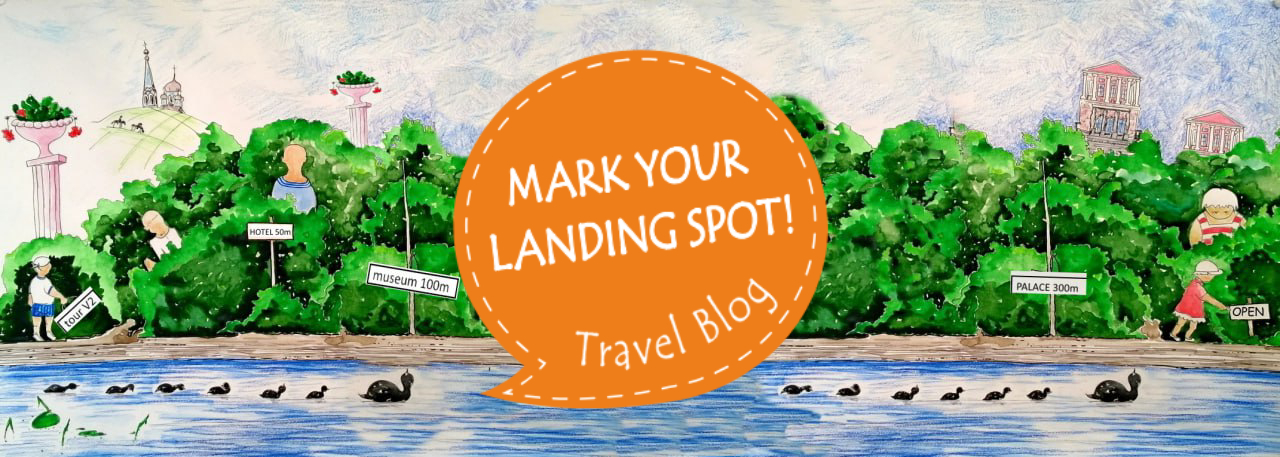Some things never lose their magic. The Song and Dance Celebration still gives me chills — every time. The scale, the sound, the emotion — nothing else comes close.
For four days, Tallinn transforms. The streets fill with singing, traditional Estonian costumes, flags, and thousands of performers from across the country. There’s dancing, parades, and a concert where over 20,000 people sing together on one stage.
It’s not just a festival — it’s part of who we are. Recognised by UNESCO and deeply loved by locals, it reaches a level of connection that feels almost spiritual — like a quiet collective ritual, somewhere between joy and reverence.
If you only have one day, make it Saturday, 5 July. The Estonian Song and Dance Celebration runs from 3 to 6 July, but this day is the heart of it all. That’s when the grand procession fills the city and the main song concert begins in the evening — easily the emotional high point of the whole event.
A few tips: Book your accommodation early (Tallinn sells out months in advance), and don’t wait too long to get your tickets. Seated spots (€37–70) are gone fast, but standing tickets (€10) are still a great option—if you don’t mind being part of the crowd.
Here’s everything you need to know: what’s happening, how to plan your visit, and why this celebration is absolutely worth your time.
Jump to: The Biggest Day | History | Preparation | Parade | Concert | After the Concert | Final Thoughts
The biggest day of the festival
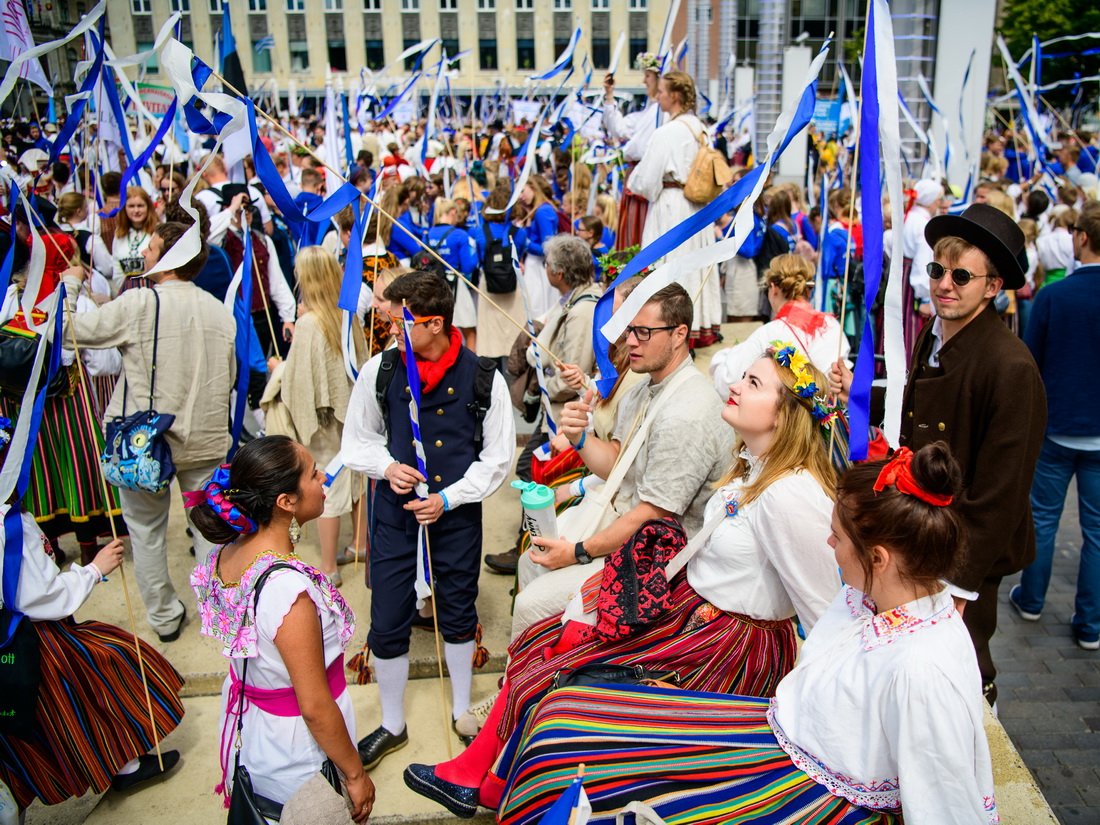
Freedom Square transforms into a sea of traditional Estonian costumes and national flags / Photo: Sven Zacek
By Saturday morning, Tallinn is buzzing. Freedom Square is packed with excitement. People gather in traditional folk costumes, chatting about who’s performing — a sister, a daughter, a friend. The energy is electric, and it’s impossible not to get caught up in it.
Singers warm up on the streets — some rehearse as they walk. Tourists get pulled into the moment. Every song is in Estonian, but the emotion speaks for itself.
☁️ Weather tip: Tallinn in July can be cool and windy, and rain is never out of the question. Dress in layers and check the forecast!
A tradition that shaped a nation
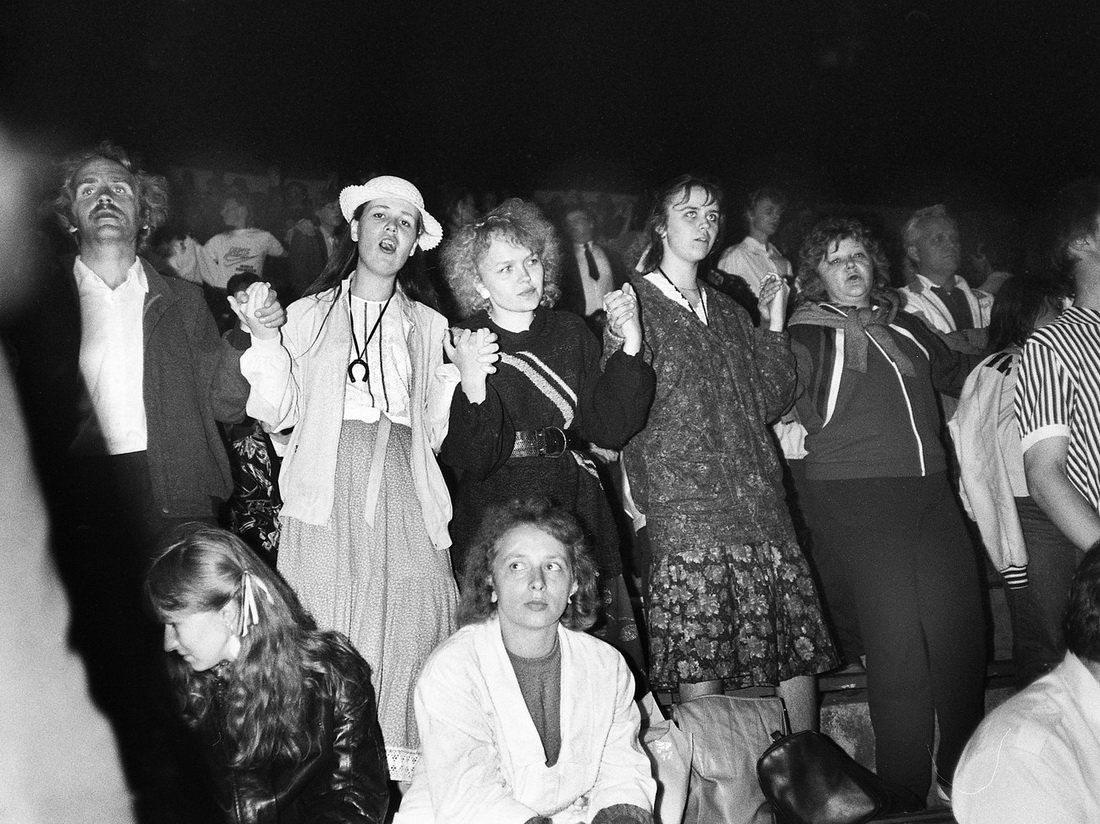
Participants singing during the 1988 nighttime concert — a powerful symbol of Estonia’s unity. Photo: Jaan Künnap / Wikimedia Commons
The first celebration was in 1869, and in 1988, songs helped lead Estonia to independence during the Singing Revolution. Knowing that changes how you hear every note.
Five years of preparation
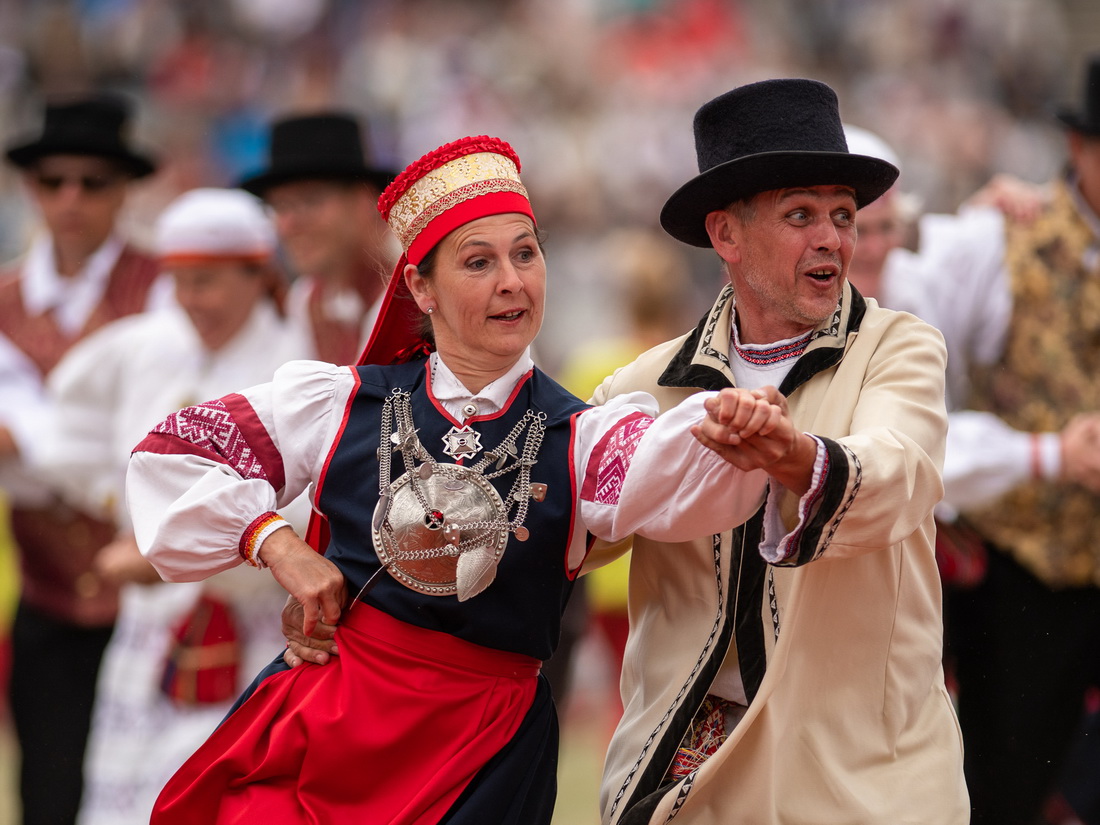
Seto dancers in their traditional outfits — symbols of a rich cultural heritage / Photo: Toomas-Vahur Lihtmaa
Preparations take five years. Rehearsals fill evenings and weekends, from tiny villages to big cities. Students, doctors, farmers — everyone sings.
Each group wears traditional clothing unique to their region. Women’s folk costumes often cost over €1500. Some are richly decorated with silver and coins — especially Seto ensembles.
The grand procession
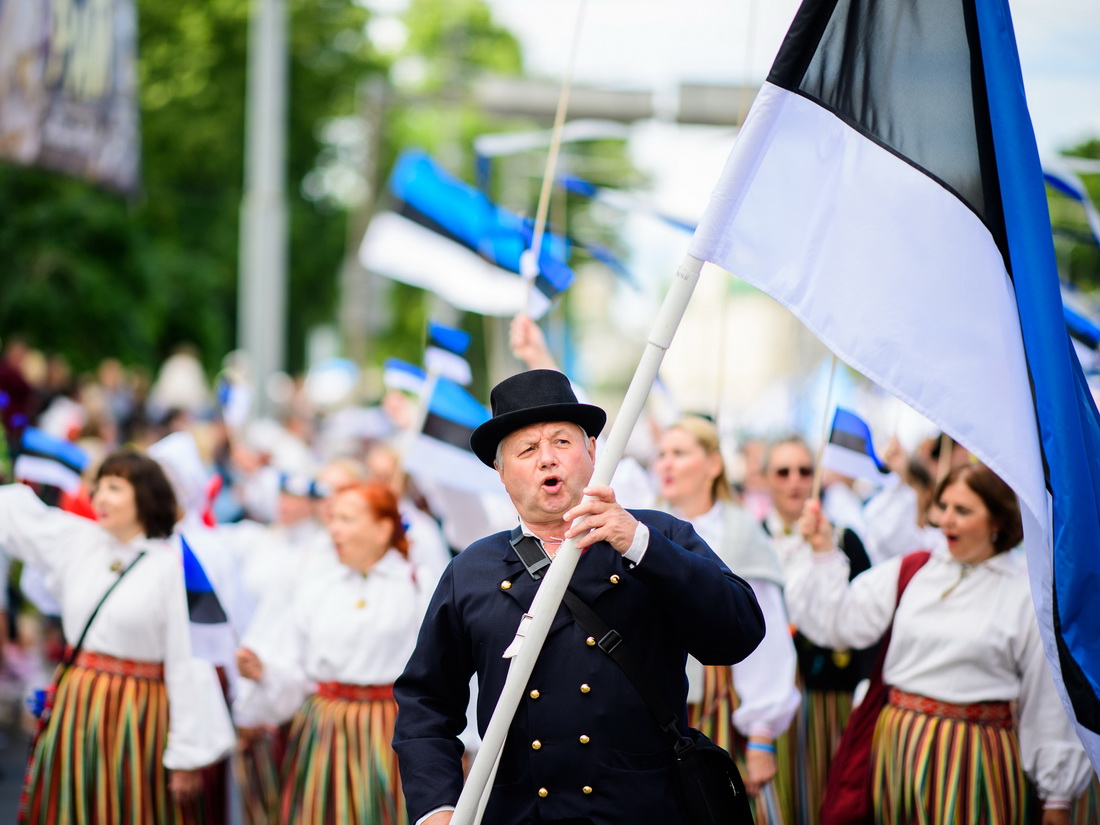
Thousands join the procession, many carrying banners and flags / Photo: Sven Zacek
The grand procession kicks off at 13:00 from Freedom Square with 35,000 participants (more than 1,000 choirs ) from across Estonia. The most popular section is between Freedom Square and Viru Keskus.
Here’s where to watch:
- Freedom Square: Full of energy and emotion
- Near Viru Gate: Great atmosphere and easy access
- Closer to Song Festival Grounds: Quieter with sea views
With choirs passing for nearly five hours, you don’t need to rush — or even move. You can pick a spot, stand there, and the entire parade will come to you, group by group. Or you can walk along the route, stop for a coffee, switch locations, take a break, and return later — the procession will still be going. And at the end, you can simply join the singing crowd and walk the 5 km to the Song Festival Grounds.
The opening concert
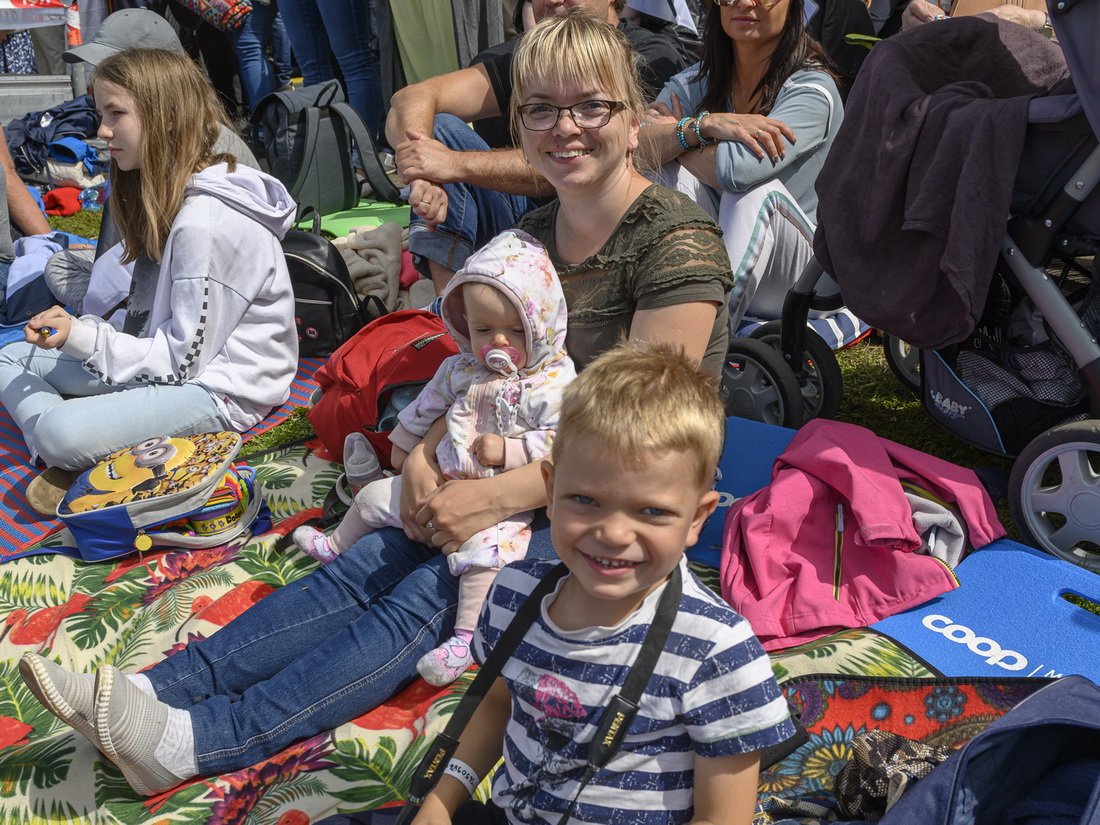
Families gather on colourful blankets — it’s more than a concert / Photo: Rein Leib
The main event starts at 19:30 at the Song Festival Grounds (Lauluväljak), with over 60,000 people expected on the field. For seated tickets, arriving 30–40 minutes before the concert is usually enough. If you’re sitting on the grass, aim for at least an hour early to get a good view.
Unlike most concerts, this one is relaxed. You can walk around, take photos, wave your flag — it really feels like you’re part of something bigger.
What to bring
- A rain poncho (umbrellas not allowed)
- Blanket or cushion
- Snacks and water
- Small flag to wave
- Cash for souvenirs
After the concert
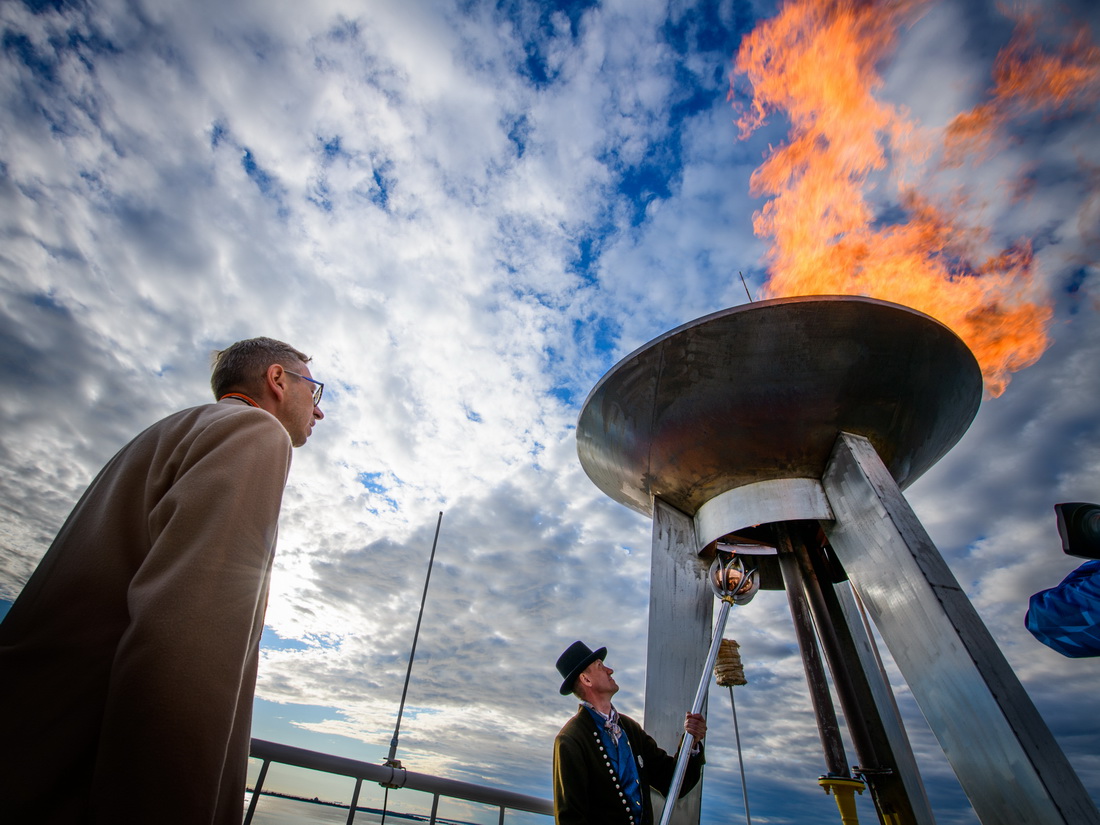
A meaningful tradition that ends the evening / Photo: Sven Zacek
The concert ends around 23:00, and the final song? It’s the one that gets everyone. All the choirs climb onto the stage — up to 20,000 voices rising together in perfect harmony. Don’t skip it. Even after the white nights are technically over, it stays light late into the evening, like the city doesn’t want the magic to end.
Getting back can be tricky — buses and taxis fill up fast:
- Walk: It takes 40–50 minutes, but it’s a lovely stroll, and you won’t be alone.
- Wait it out: Buses are packed at first, but calm down after 15–20 minutes.
- Pre-book a taxi: Expect festival pricing.
Marking Your Spot at the Estonian Song and Dance Celebration
The Estonian Song and Dance Celebration is something you’ll never forget. Even if you’re not performing, you feel like you’re part of it. It’s emotional, proud, and quietly powerful.
And while I’ve focused here on just one day, the whole festival is full of those moments—small, powerful, and impossible to forget. If you get the chance to go, take it. You won’t need to understand every word to feel what it means.
Want to explore more? Here’s my full Tallinn Guide →
